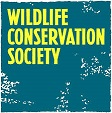Wildlife Conservation Society Report Released: Assessing Climate Change Vulnerability of Breeding Birds in Arctic Alaska
[t]he report, Assessing Climate Change Vulnerability of Breeding Birds in Arctic Alaska, co-authored by WCS Scientists Joe Liebezeit, Erika Rowland, Molly Cross and Steve Zack, details in-depth vulnerability assessments conducted on 54 species to help guide climate-informed wildlife management in the region. The project was aided by the participation of more than 80 scientists who are experts on the assessed species.
Results showed that along with the highly vulnerable gyrfalcon and common eider, seven other species were moderately vulnerable, including: brandt, Steller’s eider, pomerine jaeger, yellow-billed loon, buff-breasted sandpiper, red phalarope and ruddy turnstone. Five species, including the savannah sparrow, Lapland longspur, white-crowned sparrow, American tree-sparrow and common redpoll are likely to increase in number, according to the assessments.
The authors note that the assessments calculated vulnerabilities looking exclusively at the impacts of climate change experienced by breeding birds in Arctic Alaska, and not in other parts of their range.
 Recently, Wildlife Conservation Society (WCS), a New York based, global conservation organization committed to preserving biodiversity and which manages approximately 500 conservation projects in more than 60 countries including the Bronx Zoo, released a report titled, Assessing Climate Change Vulnerability of Breeding Birds in Arctic Alaska (2013). The 170-page document available here (see latest publications on right-side navigation bar), discusses the following:
Recently, Wildlife Conservation Society (WCS), a New York based, global conservation organization committed to preserving biodiversity and which manages approximately 500 conservation projects in more than 60 countries including the Bronx Zoo, released a report titled, Assessing Climate Change Vulnerability of Breeding Birds in Arctic Alaska (2013). The 170-page document available here (see latest publications on right-side navigation bar), discusses the following:
No comments:
Post a Comment